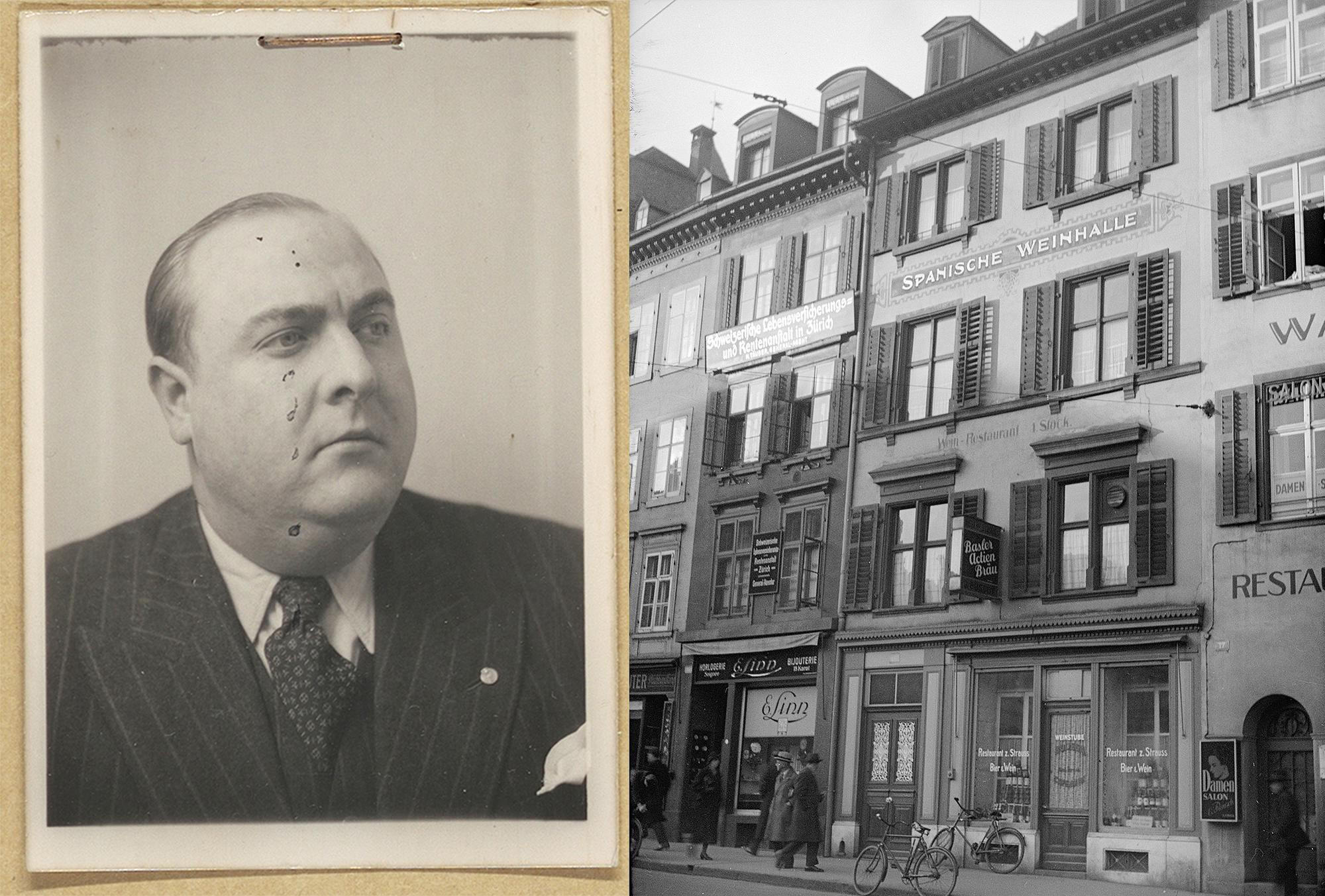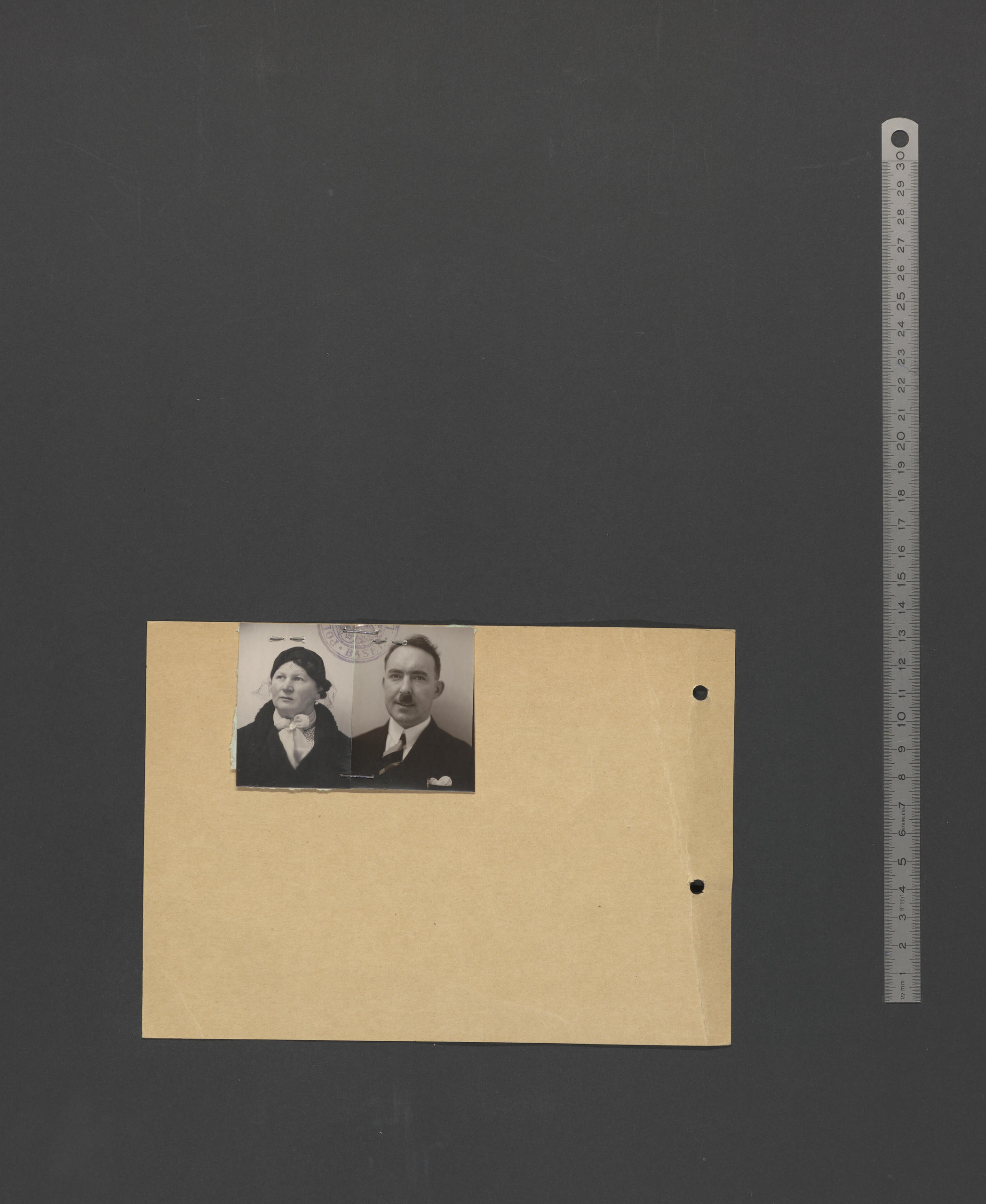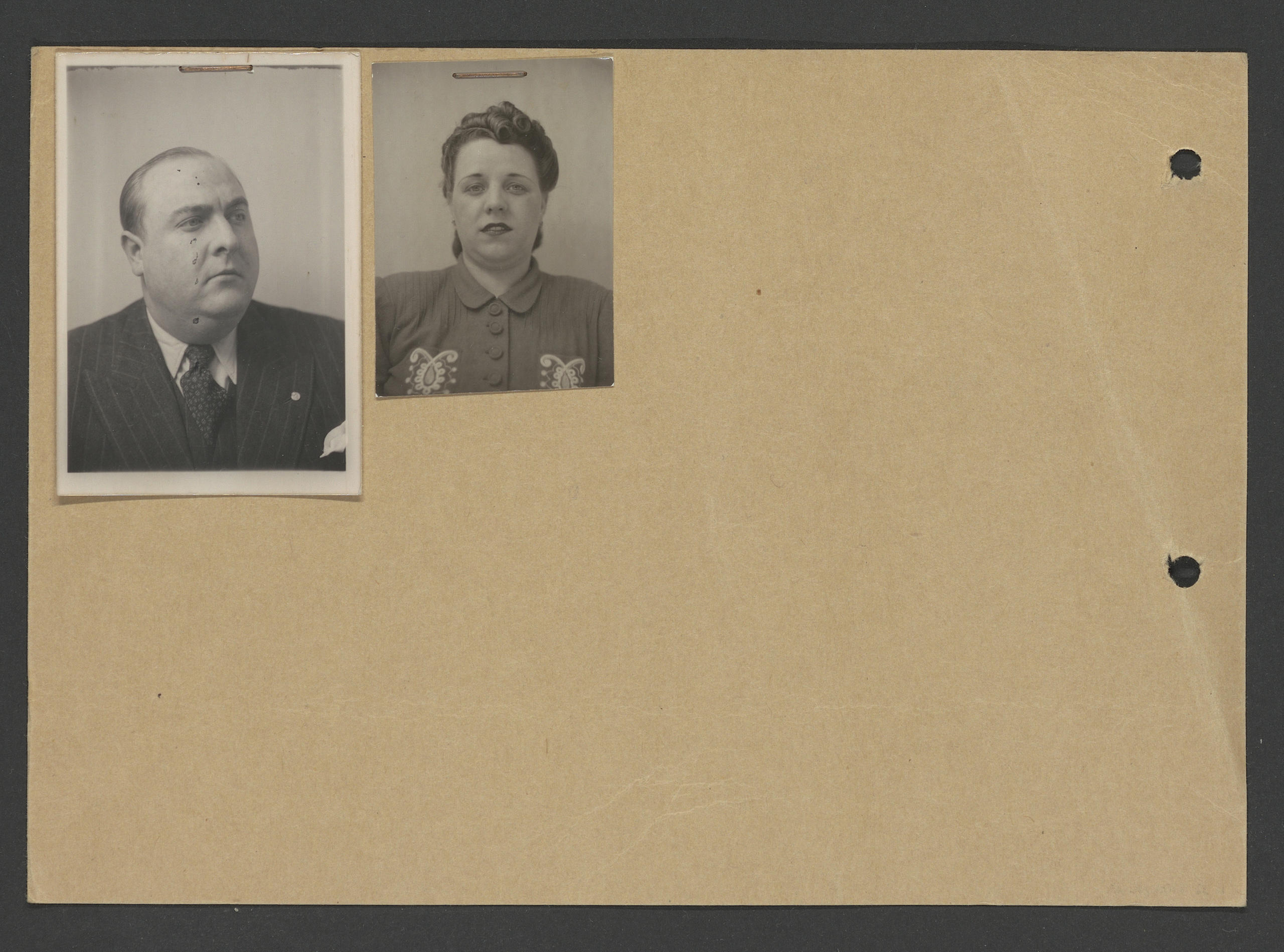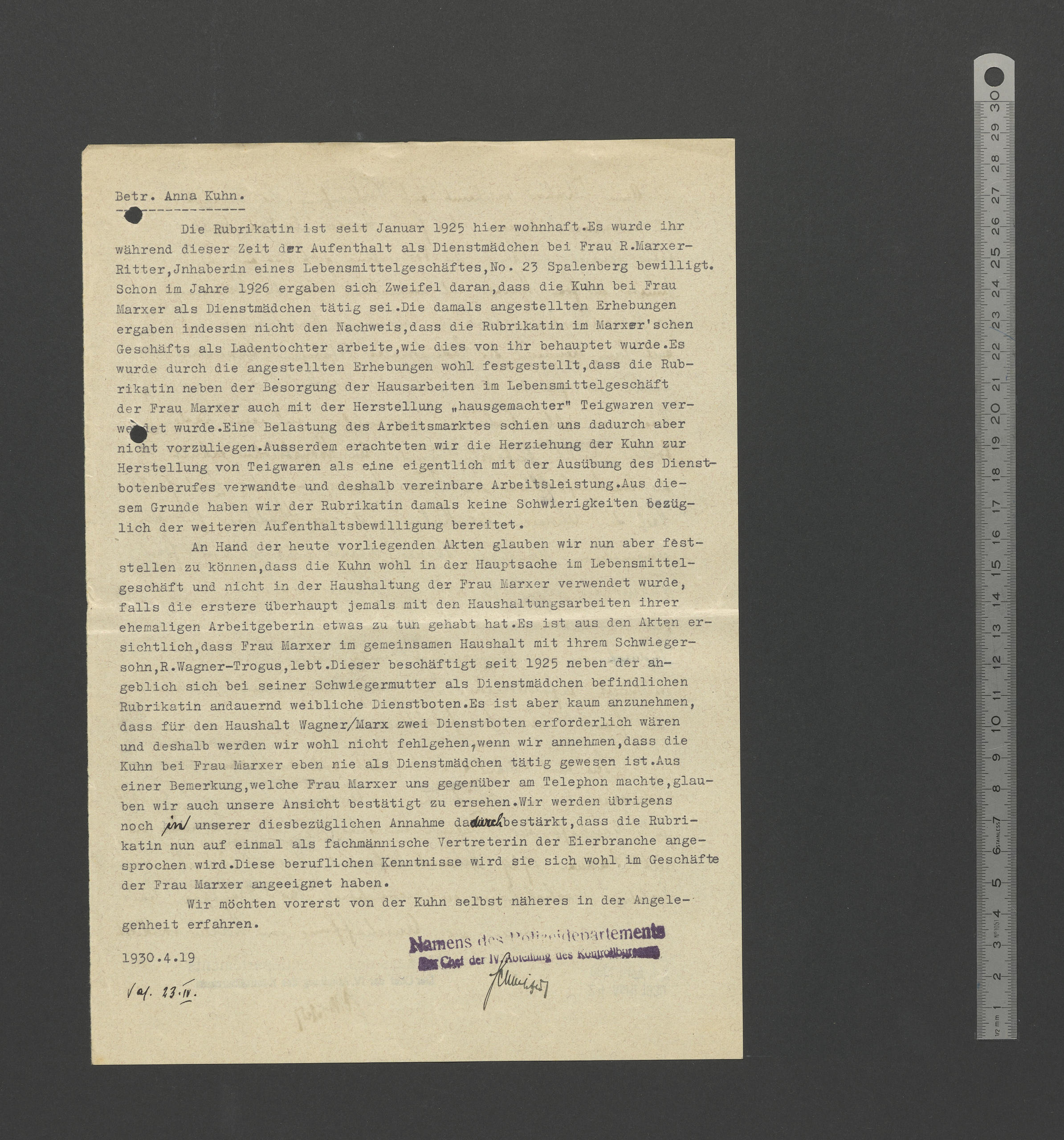
Basel police archives reveal lives of past city residents

Nazi sympathisers, a brothel owner, a political refugee and an independent young woman – these are just some of the cast of characters in Basel’s archive of immigration police files. Their stories reveal much about the history of those who settled in the Swiss city on the Rhine.
The State Archive of the Canton of Basel CityExternal link is home to up to 500,000 immigration dossiers, all from the last century. Taking up more than one kilometre of shelf space, they form the largest collection of its kind in Switzerland. It’s testament to the fact that Basel, neighbour to both France and Germany, has seen many people come and go across its borders.
Some of the historical filesExternal link are featured in a display in the Archive’s courtyardExternal link, as part of the Magnet BaselExternal link series of exhibitions on migration to the region. However, the exhibit does not include any entries past 1974 for data protection reasons.
“We realised that there is a lot more contained in these dossiers than names and numbers. There are whole life stories,” says head archivist Esther Baur.
Nazi sympathisers
Take the case of the married Lipp coupleExternal link. Karl was German, and Maria was Austrian, as we learn from a storyboard cartoon of their lives. They had lived in Basel for a long time but were Nazi sympathisers, with Karl collecting funds for Adolf Hitler’s cause.

When the Second World War ended in June 1945, Karl’s colleagues denounced him to the authorities. Karl denied everything. The police asked around at the Lipps’ neighbours, who painted a different picture.
In August, Swiss authorities told the couple to leave the country.
“Nazi sympathisers were relatively rigorously expelled, it was the ‘Nazi Putzete’ policy of the time,” Baur explains.
Karl and Maria tried to contest the decision but to no avail: they had to leave Basel the following year. But Karl still dreamed of Switzerland, returning in secret to Basel. Twice he was caught, spending a short spell in prison.
Political refugee
The case of Vanda Kovàcs [her name has been changed for data protection reasons] couldn’t be more different. She fled Hungary, arriving in Switzerland in 1956.
“These were refugees fleeing a communist country, at a time when communism was at its height. People coming from those countries who opposed the regimes or fled were welcomed with open arms,” Baur explains.
Kovàcs was taken in by a Basel family and registered with the immigration police, who were friendly towards her. The talented table tennis player found work as a laboratory assistant in Sandoz. She later married a Swiss man and moved to the United States with her husband.
The brothel owner
But sometimes people were simply tolerated, like the Spaniard Carlos Reyes who arrived in Basel with his wife, Margarita, in 1932. They built up what Baur calls “a pretty big business in prostitution”.

“It shows how a somewhat dubious person profited from the disinterest of the authorities or were tolerated more than in other cases,” she says.
By 1934, Reyes was running the Hotel Sonne in Basel. A client who caught a sexually transmitted disease from a waitress there denounced the brothel owner to the cantonal government: “Why should foreigners be allowed to run brothels?” the client wrote. The police raided the hotel and found “irregularities”.
Reyes changed premises and bought a hotel in Spain. But his attempt in 1955 to become a Swiss citizen in Basel was rebuffed by the authorities since enquiries about him were classed as “not favourable”.
The Spaniard’s last dealings with Basel authorities concerned documents for his landlord’s licence in canton Valais.
The maid’s tale
By contrast, German maid Anna KuhnExternal link, who arrived in Basel in 1925, had to fight for her rights. She took up as position in a Basel household, as was common practice at the time. She was known to the authorities who had set a detective on her because she sometimes worked in the family’s grocery store, which her work permit did not allow. She was not allowed to settle in Basel permanently.

Anna later became engaged to a Swiss man, whose sister wanted her to run a shop selling eggs. The authorities refused her request to change jobs. Anna and her future sister-in-law appealed. They lost and the immigration police and the labour office kept Anna from working until she married.
In August 1930 she did marry, became a Swiss citizen and began running her egg shop in the city centre.
It’s a classic case, says Baur, of an independent young woman not behaving in the way that was deemed acceptable at the time. This is why she was investigated.
“One of the fears among the immigration police and the population was sham marriages, an accusation that was often made quickly. It stayed this way until the 1970s and 80s.” But the practice was never as widespread as people thought, Baur adds.
The archivist says it was difficult to select the immigration cases to feature from so many dossiers. But she is pleased with the final choice that tries to reflect the different migration waves to Basel and the diversity of people involved.
For Baur, it is simply about “making people visible who otherwise would never have been visible at all”.
Magnet Basel exhibit
Magnet Basel – Migration in the Three Country Corner (or the “Dreiländereck”, referring to the meeting point of Switzerland, Germany and France) runs until October 1, 2017.
It is comprised of five locations: three in Basel and also in Liestal (canton Basel Country) and Lörrach in Germany. Topics include the lives of German maids, Italian migration and modern-day migrants.
Also on at the Basel Museum of CulturesExternal link is the separate Migration – Moving the WorldExternal link exhibition, which shows how human history is marked by migration.
Visitors to the Archive exhibition can also see a selection of files of modern-day migrants to Basel.
They include a Gambian who came to Switzerland illegally in 2015 and doesn’t expect to get a permit, a Kurdish man who has been recognised as a political refugee and is now studying and a Brazilian woman who went against convention to take a job at Novartis and wants citizenship for herself and her family.
Today, Basel City’s foreign population is around 35%. The top five countries of migrationExternal link (2015) are Germany, France, Italy, United States and India.

In compliance with the JTI standards
More: SWI swissinfo.ch certified by the Journalism Trust Initiative






























You can find an overview of ongoing debates with our journalists here . Please join us!
If you want to start a conversation about a topic raised in this article or want to report factual errors, email us at english@swissinfo.ch.